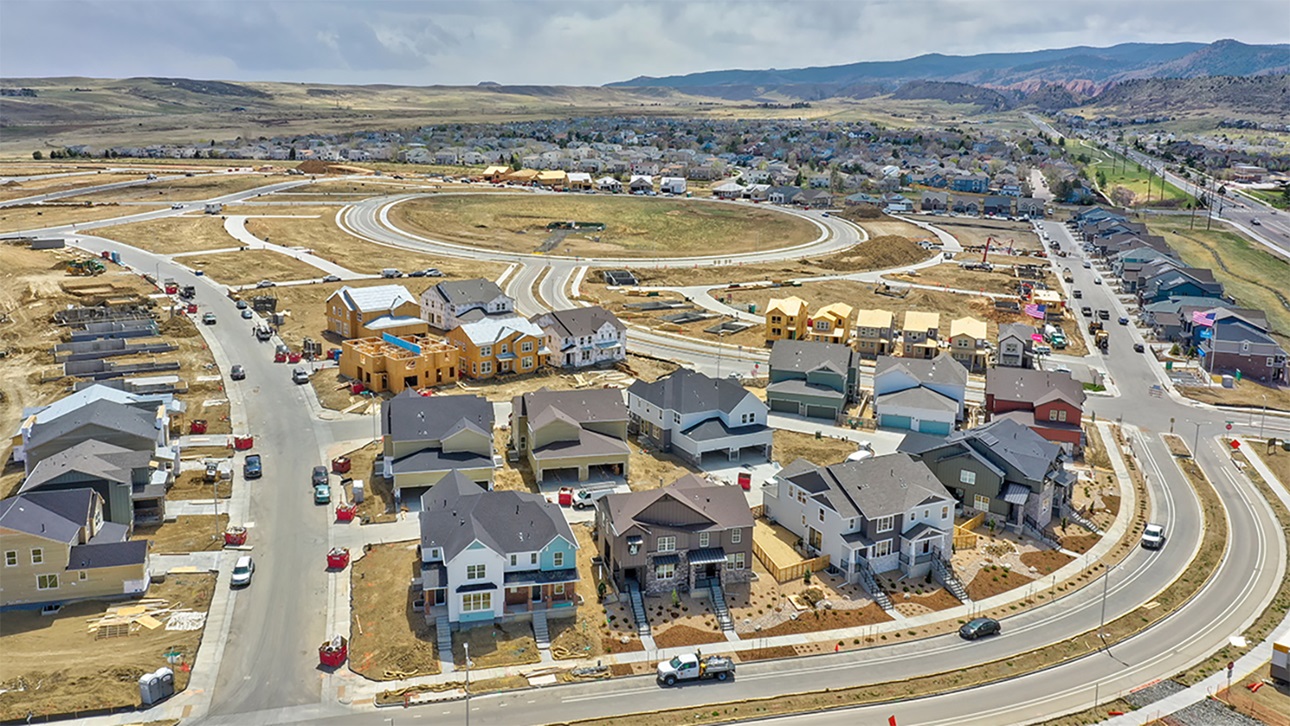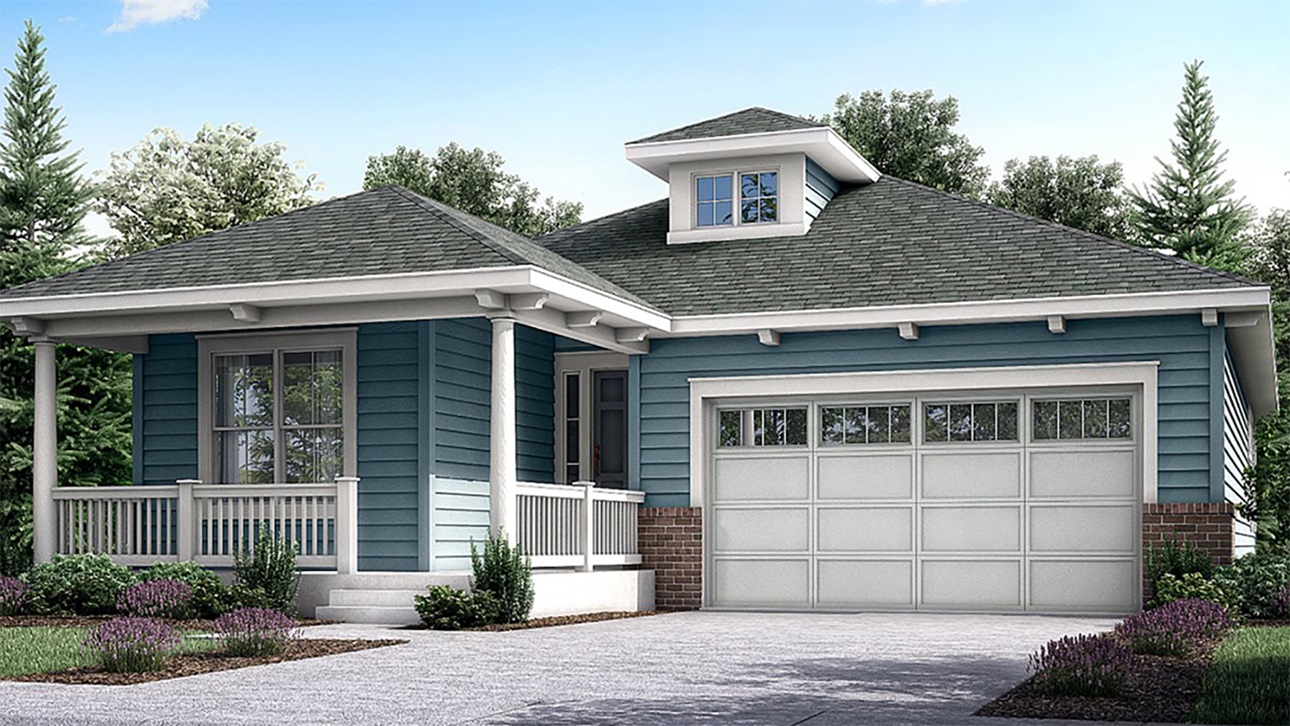Incorporating Rainwater Capture into New Developments
Location: Douglas County, Colorado
Amount of Water Saved: .55-acre feet of water per household per year
The concept of rainwater capture is a practice adopted by many home owners, developers and builders to conserve and efficiently reuse stormwater runoff flowing from a structure’s roof and or other impervious surfaces. The ability of home owners, builders and developers to harvest and reuse rainwater on their property, however, is illegal in some states. Sterling Ranch, a new mixed-use residential and commercial development 25 miles south of Denver, is at the forefront of sustainable design and offers a different perspective on efficient water usage.
Challenge: Water Access
Across the West, water usage is heavily monitored. Water levels in major sources, such as Lake Powell and the Colorado River, are historically low because of a 22-year drought. As a shared resource, developers, builders and home owners are looking for ways to reduce barriers to water access on their sites.
Resolution: Rainwater Harvesting
The developer and current president of Sterling Ranch, Brock Smethills, believes that techniques such as rainwater capture combined with landscape design techniques such as using native drought-tolerate plants and efficient outdoor drip irrigation systems are key to reducing water usage. Those techniques, along with dual water metering monitoring (i.e., separating outdoor and indoor water use) and integrated home automated software platforms, empower home owners within Sterling Ranch to actively monitor and modify their indoor and outdoor water usage.
Beyond these water efficiency design and technology improvements, the developer of Sterling Ranch received special permission from Colorado to conduct the first state-led pilot project to determine how much precipitation in the form of rainwater reaches area streams and rivers. The study’s results, expected by the end of August 2022, will be shared with the Water Courts (i.e., state agency) to evaluate the feasibility of capturing rainwater to support future residential scale. Sterling Ranch found that less than 3% of rainwater made it into nearby rivers, which further bolsters the argument for Colorado citizens to collect rainwater that came from their own property.
Challenge: Home Owner Water Use
Although developers and builders can use green building and water-efficiency certifications to promote water efficiency, actual home performance ultimately depends on the subsequent home owner being both informed and water-conscious. In most homes, however, there is only one water meter, limiting the home owner’s knowledge of how the home uses water both inside and out.
Resolution: Setting Rate Structures that Promote Water Demand Management
The developers of Sterling Ranch believe that water in Colorado has been far too cheap for far too long to be a renewable water source. To address this, the developers set Sterling Ranch’s own rate structure, which differs from what the local water municipality charges users outside of Sterling Ranch. According to Sterling Ranch founder, Harold Smethills, charging home owners a higher water rate encourages them to reduce water consumption. Sterling Ranch’s approach includes different water prices for indoor versus outdoor water use — made possible by its split water system, which records the separate rates of indoor and outdoor water use.
Sterling Ranch also implemented a dual water system that revealed water consumption at its development comprises around two-thirds indoor usage to one-third outdoor usage, which allows for better planning around the community’s water usage overall. More generally, the state’s general rule of thumb of 50% indoor and 50% outdoor water usage.
Because of these integrations into the community’s design — water-efficient appliances, dual-water metering, and drip irrigation systems — the community uses less than the county’s established .75-acre feet and instead uses only about .2-acre-feet per year. Brock Smethills believes that the rate structures are a large contributing factor to the reduced and efficient water usage within the community.
Challenge: Limited Water Capture
Because of the complexities of western water rights, there are limitations on the collection and reuse of stormwater runoff. Recent House Bill 15-1016 calls for augmentation of precipitation to prevent injury to existing water rights. This requires home builders and developers to release 30% of all water captured on site, which reduces usable harvested water to 70%. Brock Smethills believes that without these restrictions on rainwater capture, development could make up its whole outdoor community water usage. This brings up a greater conversation about how builders and developers today may continue to be environmentally conscious while following current laws.
For more information on rainwater harvesting, check out the following additional resources:





